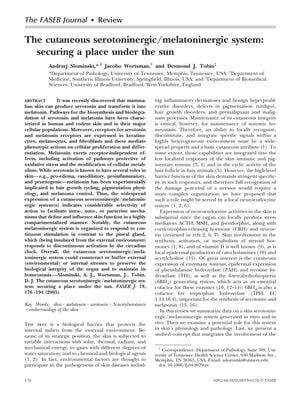The Cutaneous Serotoninergic/Melatoninergic System: Securing a Place Under the Sun
January 2005
in “
The FASEB journal
”

TLDR Human skin can make serotonin and melatonin, which help protect and maintain it.
In 2005, it was discovered that mammalian skin, including human and rodent skin, has the ability to produce serotonin and convert it into melatonin. The skin contains pathways for the biosynthesis and degradation of these substances, and skin cells such as keratinocytes, melanocytes, and fibroblasts express serotonin and melatonin receptors, which influence cell proliferation and differentiation. Melatonin also has receptor-independent effects, such as protecting against oxidative stress and altering cellular metabolism. While serotonin has various roles in the skin, including promoting inflammation and itchiness, melatonin is involved in hair growth cycles, pigmentation, and potentially in controlling melanoma. The skin's serotoninergic/melatoninergic system is distinct from the pineal gland's system, as it is designed to respond continuously to stimuli, suggesting it plays a role in protecting the skin from environmental and internal stress to maintain its integrity and homeostasis.









